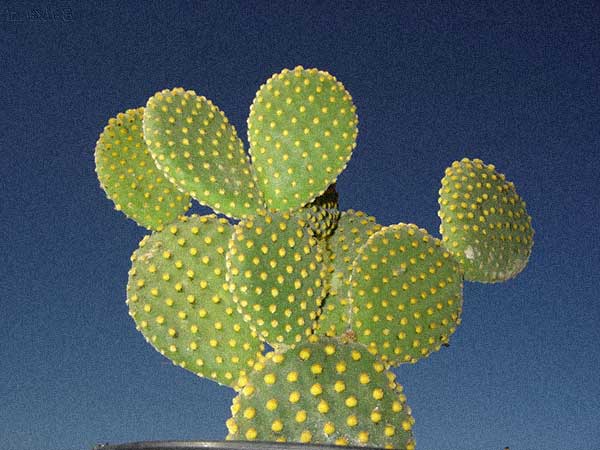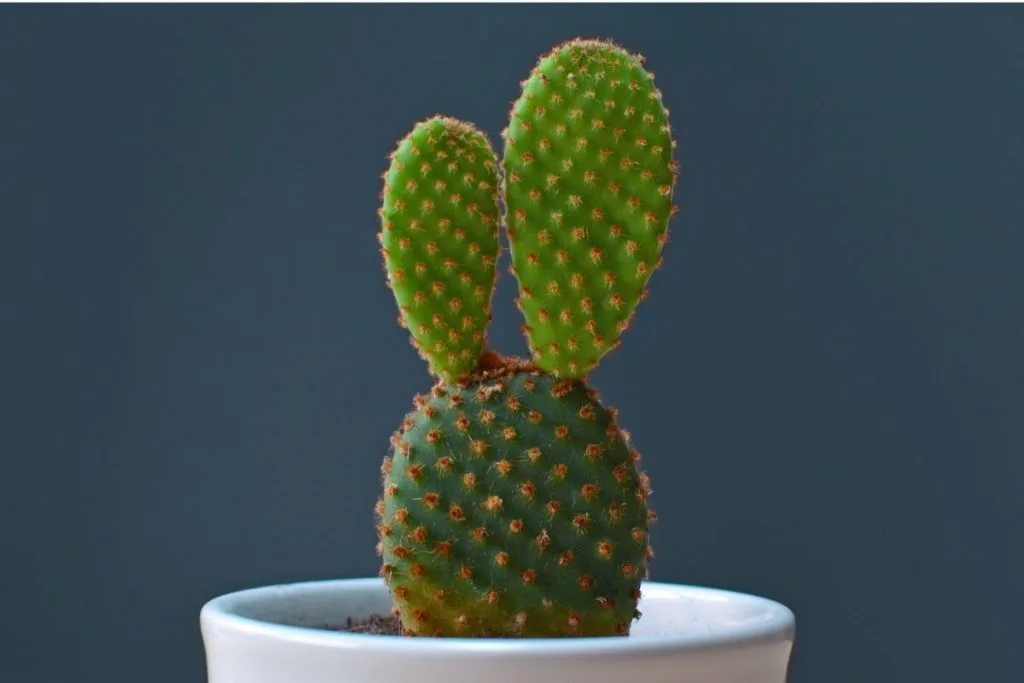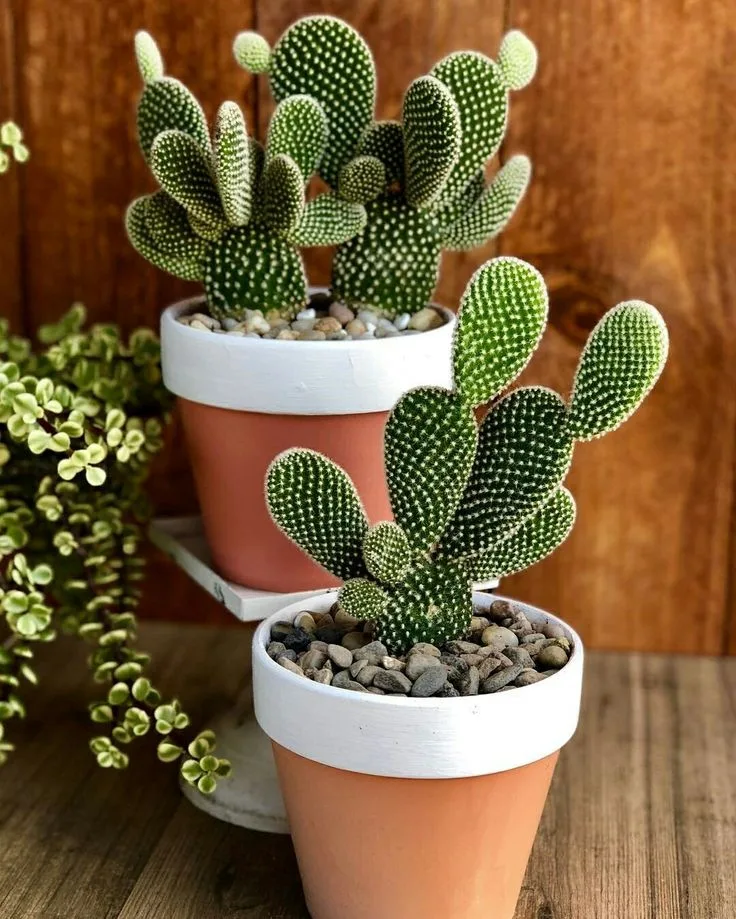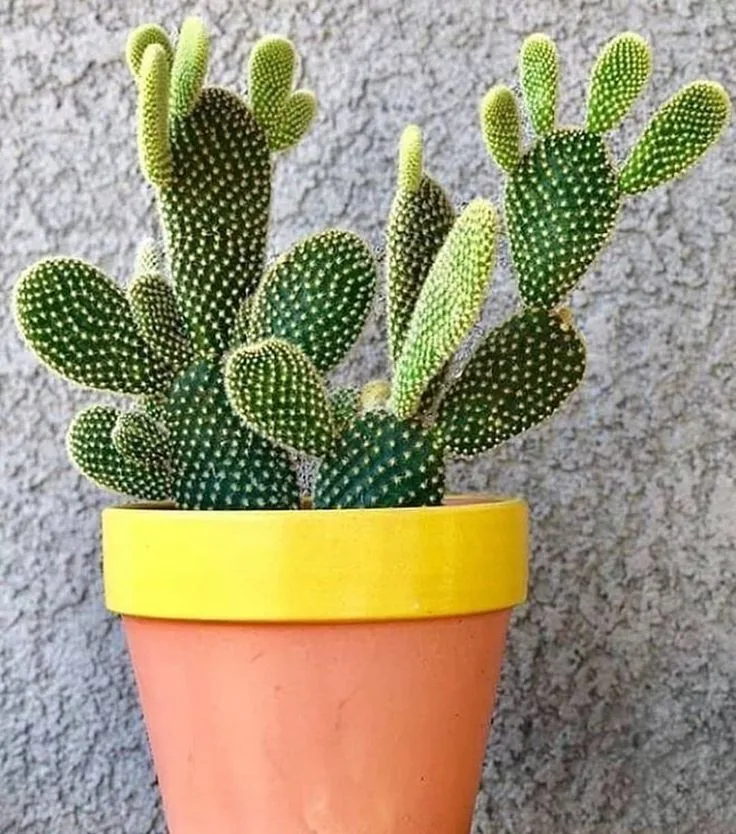Index
Introduction
Welcome to the fascinating world of the Bunny Ears Cactus, a unique plant that wins admirers with its peculiar beauty and impressive resistance. Originally from the arid regions of South America, this species of cactus has attracted the attention of gardening enthusiasts and collectors of exotic plants.
Meaning of the Bunny Ears Cactus
The Bunny Ears Cactus is not just a plant with curious spines and charming shapes. Its meaning goes beyond aesthetics, symbolizing resilience and adaptation to adverse conditions. This cactus’s ability to thrive in arid environments is an inspiring reminder that, even in the face of challenges, we can flourish and find beauty in life’s journey. Explore with us the fascinating universe of the Bunny Ears Cactus and discover the lessons this wonder of the plant kingdom has to offer.
| Item | Information about the Bunny Ears Cactus |
|---|---|
| Common Name | Bunny Ears Cactus |
| Botanical Name | Opuntia microdasys |
| Family | Cactaceae |
| Plant Type | Cactus |
| Adult size | Varies, usually from 30 to 60 cm high |
| Sun exposure | Full sun |
| Soil type | Well-drained, sandy |
| soil pH | Slightly acidic to neutral (6.0 to 7.0) |
| Flowering Season | Spring to summer |
| Flower color | Yellow and/or orange |
| Native Area | South America |
| Toxicity | Moderately toxic to humans and animals |

How to Care for the Bunny Ears Cactus
Adequate light
To ensure the healthy flowering of your Bunny Ears Cactus, provide it with full sun exposure. These plants thrive in direct sunlight, so make sure you position them in places where they receive the necessary amount of light.
Well-drained soil
Soil plays a crucial role in caring for the Bunny Ears Cactus. Use well-drained soil, preferably sandy, to prevent water from accumulating in the roots. This helps to replicate the natural conditions of this plant’s arid habitat.
Moderate watering
Although it is drought-resistant, the Bunny Ears Cactus still requires regular watering during the warmer months. However, avoid overwatering, as this can lead to problems such as root rot. Always check that the soil is dry before watering again.
Ideal temperature and humidity
These cacti appreciate warmer temperatures and low humidity. Keep them in environments where the temperature varies between 20°C and 30°C to ensure healthy development. Avoid exposure to frost and extreme temperatures.
Conscientious fertilization
When fertilizing the Bunny Ears Cactus, choose a balanced fertilizer specifically for cacti during spring and summer. Avoid excesses, as these plants do not require large quantities of nutrients.
Follow these care guidelines and provide your Bunny Ears Cactus with the ideal environment to show off all its beauty and vitality.

How to make a Bunny Ears Cactus Seedling
Preparing the cuttings
Before starting the process of propagating the Bunny Ears Cactus, make sure you choose a healthy, mature plant to ensure the success of the seedling. Wear gloves to protect your hands, as the thorns can be sharp.
Step by step:
- Selection of the cutting: Choose a healthy segment of the cactus to make the cutting. Preferably cut close to the base of the plant.
- Drying the cuttings: Allow the cuttings to dry out in an airy, shady place for a few days. This helps prevent the development of fungi during the rooting process.
- Planting in Dry Soil: After drying, plant the seedling in dry, well-drained soil. Avoid watering for the first few weeks to encourage root development.
- Moderate watering: When you start to notice the seedling growing, start watering it moderately. Remember that the Bunny Ears Cactus prefers drier soils.
How to plant the Bunny Ears Cactus
Preparing the Soil and Environment
Before planting the Bunny Ears Cactus, prepare the soil as mentioned in the care section. Choose a sunny spot protected from frost, providing an ideal environment for the plant to develop.
Step by Step:
- Soil preparation: Make sure the soil is well-drained and add sand if necessary. Slightly acidic to neutral soil is ideal for the Bunny Ears Cactus.
- Planting: Dig a hole in the soil and carefully insert the plant. Press the soil around the roots to ensure a firm hold.
- Initial watering: Carry out a light watering after planting to establish the roots. Then follow the guidelines for moderate watering.
- Regular Maintenance: Monitor the plant regularly, removing any surrounding weeds and providing additional care as needed.
By following these guidelines, you’ll be well on your way to making seedlings and successfully planting your Bunny Ears Cactus, ensuring a lush garden full of life.

Pests and diseases
Pests:
- Mealybugs: Identifiable by small white or brown dots on the plant. Remove them manually with a damp cloth and, if necessary, use natural insecticides.
- Mites: These appear as small dots on the surface of the leaves. Control the infestation with a jet of water or use neem oil.
- Slugs and snails: They can damage the roots. Reduce humidity around the plant and use organic methods or specific products.
Diseases:
- Root rot: Caused by excess water. Adjust watering practices, ensuring that the soil remains well-drained.
- Mildew: Manifests as white spots on the leaves. This can occur in humid conditions. Improve ventilation and avoid excess humidity.
- Soil Fungus: Can occur if the soil is too wet. Adjust the frequency of watering and allow the soil to dry out between waterings.
Common Problems and Their Solutions
1. Yellowing of the Leaves:
Cause: May indicate excess water or lack of light.
Solution: Adjust watering practices and position the plant in a location with more direct sunlight.
2. Wilting:
Cause: Usually the result of a lack of water.
Solution: Increase the frequency of watering, ensuring that the soil remains moist but not soggy.
3. Leaf spots:
Cause: Can be a sign of infestation by spider mites or mildew.
Solution: Treat the pests as mentioned above and adjust the environmental conditions to prevent future occurrences.
By proactively dealing with these common problems, you’ll keep your Bunny Ears Cactus healthy and vibrant, ensuring a continuous display of its unique beauty.
Curiosities and Myths
Intriguing facts
- Resilient Origin: The Bunny Ears Cactus, which originated in the arid regions of South America, has developed remarkable adaptations to survive in challenging environments.
- Night Flowers: The flowers of this plant bloom mainly at night, attracting nocturnal pollinators such as moths and bats.
- Curious Spines: The spines of the Bunny Ears Cactus, although sharp, are actually small clusters of modified hairs called glochiids.
Myths Debunked
- Cacti Don’t Need Water: Although drought-resistant, cacti, including the Bunny Ears Cactus, still need water. Proper care includes moderate watering.
- All Cacti Are the Same: Each species of cactus has its own unique characteristics. The Bunny Ears Cactus stands out for its curious “ears” and spines.
- Cacti Don’t Bloom Indoors: With the right care, it is possible to make the Bunny Ears Cactus flourish indoors, providing the ideal conditions.
Exploring the curiosities and debunking common ideas about the Bunny Ears Cactus adds a fascinating layer to the experience of growing this unique and enchanting plant.

Conclusion
As we explore the fascinating universe of the Bunny Ears Cactus, we come across a truly remarkable plant. Originally from the arid lands of South America, it not only enchants with its unique beauty, but also inspires admirers with its resilience in the face of adversity. We learn the importance of providing the right amount of sunlight, the well-drained soil that mimics its natural habitat, and how to water sparingly to ensure its healthy flowering.
In addition, by addressing pests, diseases and myths, we debunk misconceptions and highlight the importance of a proactive approach to keeping the Bunny Ears Cactus vibrant and robust. Its curiosities, from its resilient origins to its nocturnal flowering, add a layer of charm to this gardening experience. Growing the Bunny Ears Cactus isn’t just about caring for a plant, it’s about immersing yourself in a world of uniqueness and continuous learning. By following the guidelines carefully, we can fully appreciate the unique beauty of this wonder of the plant kingdom in our own homes.
Frequently Asked Questions
What does the Bunny Ears cactus flower look like?
The flower of the Bunny Ears Cactus, often referred to as the Mickey-ear Cactus due to its resemblance to the ears of the famous character, is small and delicate. It usually has vibrant shades of yellow and orange. The night blooming adds a magical touch to the garden, providing a unique flowering experience.
What is Bunny Ears for?
The “ears” of the Bunny Ears Cactus are actually small clusters of modified spines known as glochiids. These structures have the function of protecting the plant against herbivores and dehydration, reflecting its adaptation to the arid environment. They play a crucial role in the plant’s survival, contributing to its resilience in adverse conditions.
How to care for a Bunny Ears cactus?
To ensure the health of this exotic cactus, it is essential to provide full sun exposure, well-drained soil and moderate watering. Avoiding excess moisture is crucial to prevent problems such as root rot. In addition, when dealing with pests, it is advisable to monitor them regularly and adopt specific measures, such as manually removing mealybugs. These practices ensure successful cultivation and the continued display of the Bunny Ears Cactus’s unique beauty.







